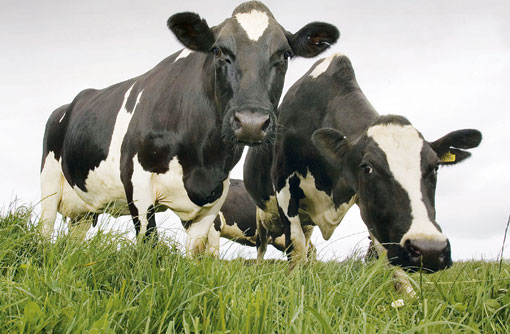Livestock 2013: How to manage grass rotation

Grazed grass is by far the cheapest way of feeding cows, so it makes sense to make use of all the land you have available. Aly Balsom speaks to DairyCo’s Piers Badnell about the basic principles of setting up and managing a grass rotation system.
Grass rotation works on the principle of rotating stock between paddocks, depending on grass growth.
“Ideally you want all your fields at different stages of grass growth – some of which have just been grazed and others that are ready to be grazed,” explains Mr Badnell.
This gives you control over grazing intakes and allows you to achieve maximum grass quality by using paddocks efficiently.
Starting out – assessing grass
“Don’t have a fixed turn out date in your head – walk the farm and assess how much grass you have – most producers will have more than they think. Always try and get cows out earlier than previous years.”
Mr Badnell says increasing grazed grass in the diet should be viewed in the same way as setting up a winter ration.
“Analyse grass fortnightly so you can accurately determine how much supplementation is needed throughout the season.
“Whenever cows start to go out, start them off on 5kg DM a cow a day from grazed grass so there is no rapid change in diet – this should take her 3-4hrs to graze.”
Where possible, the aim should be to get cows out in February, or at least two weeks earlier than usual, as this will help set the grazing wedge up earlier. This early grazing is probably best for in-calf, mid-late lactation cows.
Paddock set-up
The key is to allocate cows to where you want them to graze, rather than giving them a choice. Aim to have 20-30 grazing areas.
“You may only have five fields, but these can be split up into areas,” says Mr Badnell. “You don’t have to spend a fortune on set-up if you’re just starting out with a rotation – you can still get more from grass.”
However, when thinking seriously about a rotation you may need to consider investing more in tracks and water troughs.
Grass wedge
“Ideally you want all your fields at different stages of grass growth,” Mr Badnell explains.
“Grass should be grazed at the 2.5-3 leaf stage for maximum efficiency and cows should start grazing a field when grass cover is at 2,700-2,800kg DM/ha.”
Aim to graze grass down to 1,500kg DM/ha. Overall, average farm cover should be about 2,200kg DM/ha and each grazing rotation (around all fields) is likely to be an average 25-30 days.
“At peak growth, the round may take 15-18 days, with the round extending to 30 days when growth slows,” he says.
Using a rising grass plate meter to assess farm grass cover (kg DM/ha) allows a grazing wedge to be accurately set up. Walking the farm weekly and collating figures provides early warning as to whether you are likely to see a grass surplus or shortage in 10 days time.
Supply and demand calculations
- Assessing supply and demand is essential in managing the grass wedge:
Demand = Number of cows x required kg DM a cow a day from grass, eg, 150 cows x 15kg DM a cow a day = 2,250kg DM demand
Supply = Total hectares of grass available x grass growth rate (Growth rate can be easily calculated when comparing covers from week to week using a plate meter) eg, 45 ha x 45kg DM growth a day = 2,025kg DM supply = This gives a 225kg DM shortfall
- In a period of high growth rate, grass could easily get ahead of you, so this in-balance could be in your favour
- Or to tackle this shortfall, you could alter the supply and demand – can you reduce demand? Equally if supply outstrips demand, could you up the amount needed from grass or take more fields out for silage?
For more from Livestock 2013, see our dedicated page.
